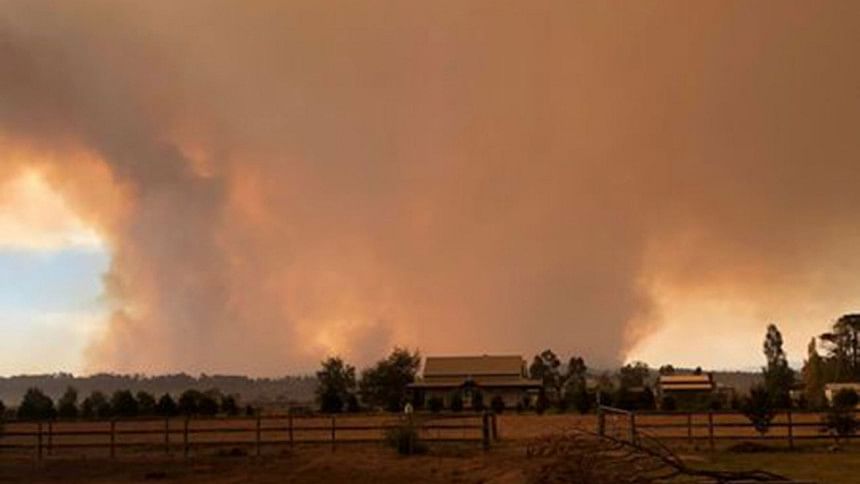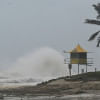Record Australian heat brings fire to scorched land

Firefighters battled 25 blazes across the Australian state of Victoria on Sunday as a record-breaking heatwave delivered the hottest start to March on record for the southern third of the country.
The continent is prone to deadly blazes thanks to its combination of remote terrain, high summer temperatures and flammable eucalyptus bush.
A severe four-day heatwave has brought fire weather across the southern parts of Western Australia, South Australia, Victoria and Tasmania over the weekend.
The south-eastern state of Victoria was the worst hit, with more than 2,000 firefighters, water-bombing aircraft and volunteers battling blazes on Sunday.
A cool change was forecast for late on Sunday but an associated wind change would bring danger for firefighters.
"It's a dangerous time, putting it bluntly," Victoria's Emergency Management Commissioner Andrew Crisp said in a televised emergency briefing on Sunday.
"Not just for communities but for firefighters."
In 2009, the worst bushfires on record destroyed thousands of homes in Victoria, killing 173 people and injuring 414 on a day the media dubbed “Black Saturday”.
The largest fire in Bunyip State Park was sparked by multiple lightning strikes on Friday.
Rural townships were evacuated with no reported injuries or deaths, but three homes and several properties had been destroyed by noon on Sunday.
Australia's Bureau of Meteorology said the heatwave, defined as three consecutive days and nights of above-average temperatures, had broken more than a century of records.
"It's broken heat records for March in four states along the southern coastline," meteorologist Dean Narramore told Reuters by telephone on Sunday.
Temperatures in Tasmania, Australia's southernmost state, reached 39.1 degrees Celsius (102°F) on Saturday, the hottest in 131 years of records, Narramore said.
Australia's hottest summer on record is causing several industries to wilt, including the $4.4 billion wine industry with grape yields set to drop to the lowest in years.
Drought has also damaged the winter wheat crop and is expected to drag the wool clip to a record low.
The Pacific nation had its third warmest year on record in 2018, a year marked by severe drought in parts of the country and a prolonged bushfire season.
Australia continued the trend into 2019 with its hottest January on record.

 For all latest news, follow The Daily Star's Google News channel.
For all latest news, follow The Daily Star's Google News channel. 








Comments